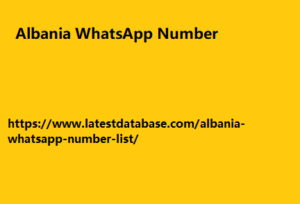|
|
PageRank was named after Larry Page and it also shows the status or rank of the web page according to the linking. Launched in 1998, PageRank helped Google become more accurate than earlier search engines and kept it from being manipulated. Google kept PageRank scores secret and added more signals over time. But inbound links remain an important ranking factor. Later iterations of PageRank focused more on the quality of links rather than quantity, such as by analyzing trust metrics and anchor text patterns. Along with Saalon, Google developed more advanced link analysis systems to reduce the dependence of PageRank.
Nowadays, PageRank is not calculated for public use or updating. But it opened the way for modern link analysis and is still influential in deciding website authority for Google. Now by analyzing other factors with machine learning, link signals are seen for Albania WhatsApp Number relevance and ranking. But inbound links from trustworthy sites are still a key Google ranking signal. Link Analysis System Brother, earlier the problem of understanding the importance of a page in search engines was solved by Link Analysis System. Even before Google, in 1996 Robin Li Yanhong had created an algorithm called Randex which looked at how many pages were linking to a page and decided its ranking accordingly.

This Randex algorithm was the world's first algorithm which ranked websites by analyzing the links that came from them. This was named Link Analysis System. Page Rank Algorithm After Randex, Google co-founder Larry Page created his own Page Rank algorithm, which took the link analysis system forward. Page Rank analyzes links. Page Rank Algorithm decides how much ranking score or Page Rank score will be given from one page to another. Larry Page says that it is not right to rank only according to the quantity of links because links can also be manipulated like other signals, and how many links can be made.
|
|